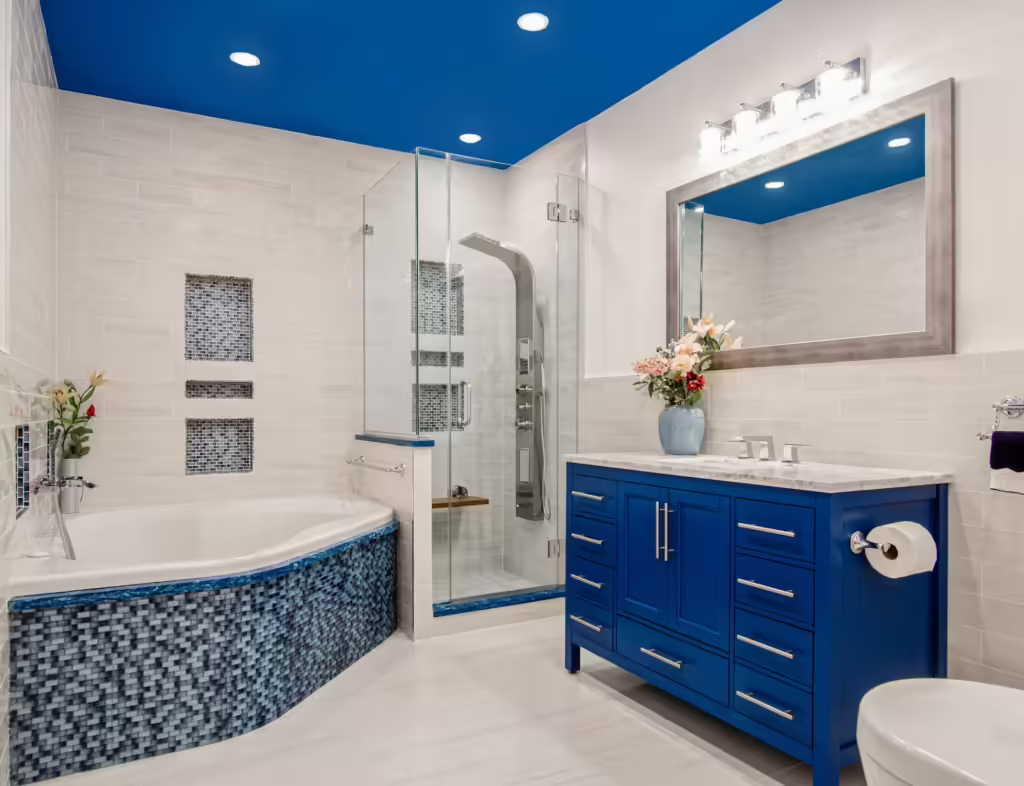Your bathroom needs to be functional for your lifestyle, and this can often include different electric items like outlets, lighting, fans, heaters, the list goes on. Where exactly can these additional electrical items be installed? Bathroom Electrical Zones determine where electrical can be installed in a bathroom and what type of electrical can be safely installed in that zone. When planning on installing any electrical appliance in a bathroom, it’s essential to identify the bathroom zones first, as safety is always the number one priority in any renovation or build.
Zone 0:
This zone is the most susceptible to electrical hazards as it is where water is most prevalent. Zone 0 is any area inside of your tub or shower basin. Items installed in this area must be rated for total immersion as this area can hold water. Ventilation products are not recommended to be installed in this zone. Any fitting in this area, like ground shower lights, must be low voltage (12v max) and have an IP rating of at least IP67.
Zone 1:
Zone 1 is the area above your bath or shower tray. Commonly referred to as the “splash zone,” items installed in this area need to be rated to withstand contact with water but not necessarily rated for submersion. Shower lights will need to be IP44 or higher. When the fitting is 240v, a 30ma RCD must be used to protect the circuit.
Zone 2:
This area is the least likely to get wet but still runs the risk of occasional water splashes. This zone is where you may want an exhaust fan, or other lighting that isn’t rated for Zone 1 or 0. Areas considered in Zone 2 include areas stretching 0.6m outside the bath’s perimeter and to a height of 2.25m from the floor and the area around the sink, within a 60cm radius of any water source. Lighting installed in this area should be at least IP44.
Beyond Zone 2:
When the size of a bathroom extends beyond zones 0, 1 and 2, portable equipment can be used if it’s flex length does not enable them to be used in zone 2. For instance, a hairdryer can be installed outside these zones as long as its stretched length does not allow it to be used in zone 0-2. Although installing electrical equipment beyond zone 2 is permitted without an IP number, it is always encouraged that electrical items have mechanical and moisture protection mechanisms in place.
While it is helpful to know where your bathroom zones are and the difference in electrical requirements, you should always consult a professional and hire an experienced electrician to install electrical items.
For more electrical guidelines throughout your home, reference The National Electrical Code (NEC). While most local codes follow the NEC’s guidelines, your local codes take precedence over The National Electrical Code wherever there is a discrepancy between them.
To find more educational blogs like this one follow Statewide Remodeling on Facebook, or contact our professionals for your bathroom remodel project!



.png)
.png)
